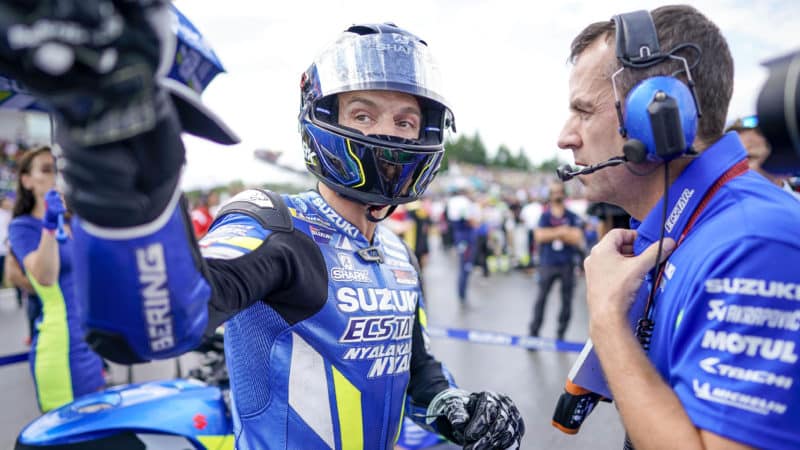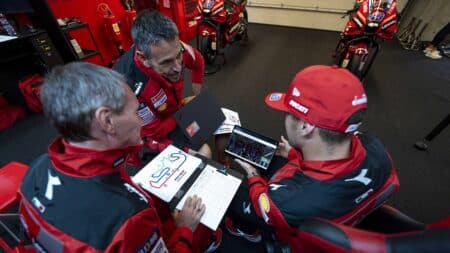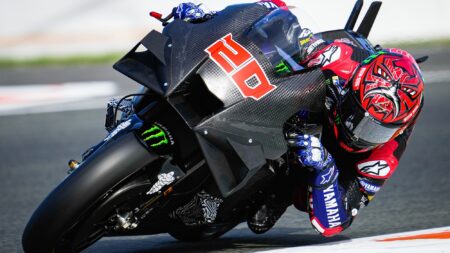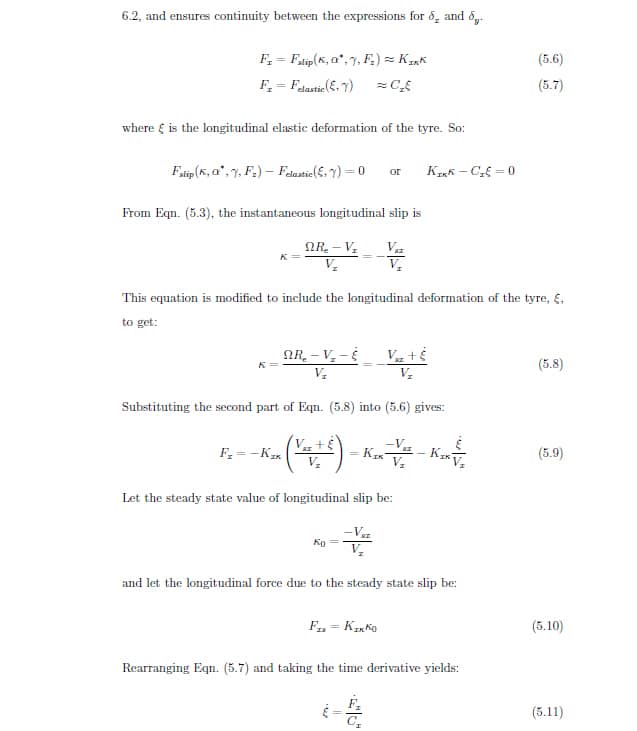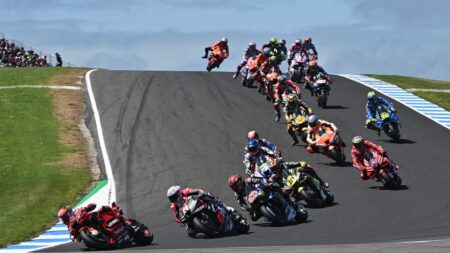These days riders spend more time looking at computer monitors than they do riding their motorcycles, because all those squiggly lines contain the secret to going faster.
It’s therefore no exaggeration to say that O’Kane’s work on data acquisition and chassis dynamics revolutionised motorcycle racing all those years ago and since then he’s never stopped pushing forward to learn more about motorcycle dynamics to help make bikes work better and go faster around racetracks.
Back in the early 1990s when I worked for Team Roberts, ‘King’ Kenny allowed me to examine and then publish the first data traces I’d ever seen, of a Rainey lap of Donington Park.
The data was a revelation: the squiggly lines told you so much about how Rainey rode, most impressively the detail of his throttle technique exiting corners: the throttle trace rising, then dipping briefly as he feathered the throttle to control a slide, then rising again and dipping slightly as he controlled another slide and then finally to full throttle when he finally found enough grip. The data belonged to Team Roberts, not Yamaha, but even so Yamaha wasn’t happy when I published the data. No one ever told ‘King’ Kenny what to do!
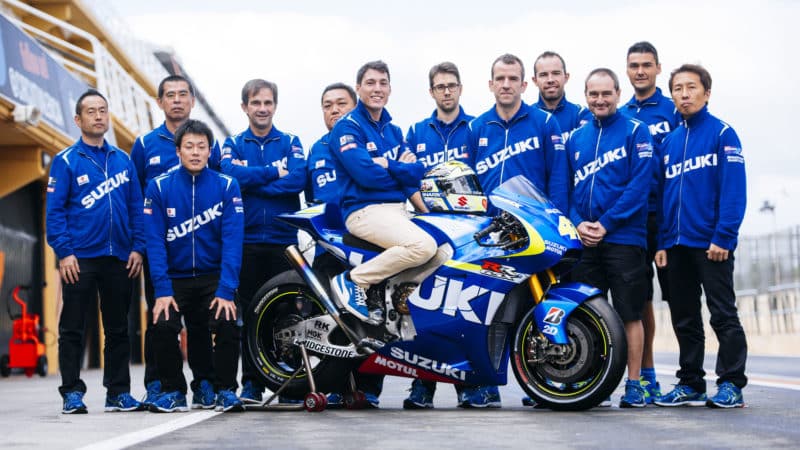
O’Kane (fifth from right) with Aleix Espargaró and the Suzuki team before the GSX-RR’s inaugural 2015 season. Note new HRC technical manager Ken Kawauchi, just behind Espargaró
Suzuki
A couple of years later I was sat in the Team Roberts truck with O’Kane and the team’s lead engineers, Mike Sinclair and Warren Willing, to examine the first computer simulation of a motorcycle going around a racetrack. This was basically a stick man aboard a stick motorcycle, but you could see everything working – the suspension compressing, the geometry changing and so on. To me, it seemed like going to the moon, but MotoGP has come much, much further in the last three decades.
A decade or so ago O’Kane started working on his thesis – High-fidelity modelling of motorcycle dynamics – for a PhD in the Faculty of Science & Engineering at the National University of Ireland, near Dublin. The thesis represents a major advance in this area of performance research. It was published in 2018 and gained O’Kane a doctorate of philosophy.

